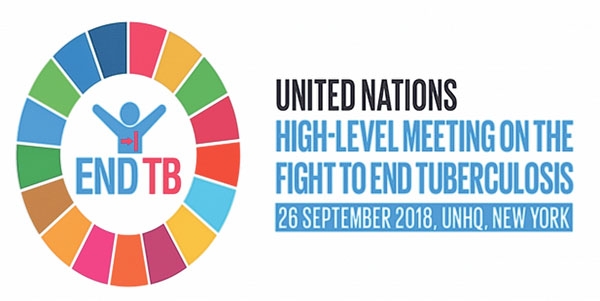The head must follow what the hand writes
|

Shobha Shukla
We are about to celebrate the 5th anniversary of the first-ever United Nations High Level Meeting (UN HLM) on the fight against tuberculosis (TB) that was held on 26 September 2018 during the 73rd UN General Assembly. "The UN meeting resulted in an action-oriented political declaration, which was adopted by the UN General Assembly on 10 October 2018," said the UN health agency, the World Health Organization (WHO).
Is it time for accountability ?
The UN member States are now gearing to hold the 2nd UNHLM on TB on 22nd September 2023 with yet another political declaration in the offing.
But whatever happened to the grandiose promises made in 2018?
Are actions on the ground matching the required pace and urgency which is warranted if we are to end TB globally by 2030 (and by 2025 in India) ? We have been crying hoarse that TB is curable and preventable. Yet, despite all well meaning efforts, the number of people falling ill with TB rose from 10 million in 2019 to 10.6 million in 2021, and the number of deaths increased from 1.4 million in 2019 to 1.6 million in 2021.
It would be good to recall at least some of the targets included in that political declaration of 2018 that our world leaders had endorsed to fulfil during 2018-2022 (and achievements thereof):
* Target 1: Diagnose and treat 40 million people with TB, including 3.5 million children, and 1.5 million people with drug-resistant TB.
- Achievement: Till 2021, only 66% of this target was achieved - 26.3 million people- including 1.9 million children (38% of the target), and 650,000 people with drug-resistant TB (43% of the target)- were provided with TB treatment. Also, only 38% of the people with TB were diagnosed with WHO-recommended rapid molecular diagnostics during 2018-2022.
* Target 2: Provide TB preventive treatment to at least 30 million people, including 4 million children (under 5 years of age), 20 million other household contacts of people affected by TB, and 6 million people living with HIV.
- Achievement: Till 2021 only 42% of this target was achieved - 12.5 million people were provided with TB preventive treatment- including 1.6 million children (40% of the target), 0.6 million other household contacts (3% of the target) and 10.3 million people living with HIV (which is commendable as this is above the target).
* Target 3: Fully finance the global TB response with annual funding reaching at least USD 13 billion by 2022.
- Achievement: Only 42% of this global target had been met by 2021- estimated spending on TB diagnostic, treatment and prevention services in low and middle-income countries was USD 5.4 billion in 2021.
* Target 4: Annual investments for TB research and development must reach USD 2 billion by 2022
- Achievement: Less than USD 1 billion was made available in 2021 for TB research and development, meeting 50% of the targeted amount.
No excuse for inaction: Ending TB is a human rights imperative
The political declaration of the forthcoming UNHLM on TB must include not only ambitious targets and increased funding, but also robust accountability mechanisms, and a human rights-based approach that leaves no one behind in the fight against TB.
"We firmly believe that it is vital to strengthen the political declaration to ensure it adequately addresses the persistent challenges faced by those affected by TB and builds on, rather than regresses from, the commitments outlined in the 2018 declaration," says Subrat Mohanty, Board Member of the global Stop TB Partnership (he represents the Developing Country NGO Delegation on the board).
The minimum asks/expectations
The Stop TB Partnership and other TB advocates demand that the Political Declaration of UNHLM on TB must at least include the following commitments to be met by all the countries during the period 2023-2027:
* Clear measurable targets to diagnose and treat 40 million people with TB (including 3.5 million children with TB and 1.7 million people with DR-TB), by December 2027, using modern diagnostics and short treatment regimens.
* Provide TB preventive therapy to 35 million people (including 8 million children, 21 million other household contacts and 6 million people living with HIV), by December 2027, with new, effective short-course drugs and regimens.
* Improve real-time data collection, analysis, reporting and automation, to support evidence-based decision-making, effective programme implementation and improved health outcomes for people affected by TB.
* Recognize the critical place of gender, gender-responsive programming and the empowerment of women and girls and other gender diverse people in an effective TB response.
* Implement and monitor policies that recognize the rights of people, including key and vulnerable populations, to have accessible, affordable and quality services and care, promote rights-based laws and practices and community-led monitoring that enable access to quality services and care, and to end TB-related stigma and discrimination.
* Accelerate research, development, roll-out and access to new TB vaccines, diagnostics, drugs and other new tools, including digital health technologies. This includes affordable non-sputum-based point-of-care TB diagnostics to identify early TB disease, new rapid molecular tests, and shorter and more patient friendly treatment regimens with less side effects for TB, drug-resistant TB and latent TB.
* Mobilize sufficient and sustainable financing from domestic and external sources for scaling up quality prevention, diagnosis, treatment and care of TB, with the aim of reaching USD 22 billion a year by 2026 and USD 35 billion annually by 2030 at the global level. Commit to secure funding for low- and middle-income countries from domestic and external sources to reach USD 15 billion a year by 2026 and USD 21 billion annually by 2030.
* Provide for an accountability framework that includes:
(To be contd)

